what is Venturimeter: Definition, Parts, Working, 4.0
Article Contents
Introduction to venturimeter
Fluid flow measurement is crucial in various industries and applications. The Venturi meter stands out as a reliable and versatile device for precise flow rate measurements. In this detailed guide, we will explore the Venturi meter, its parts, materials, working principle, equations, coefficient of discharge, types, applications, advantages, disadvantages, codes, and standards. Additionally, we will compare the Venturi meter to the orifice meter to understand their differences and best use cases.
what is venturimeter
A venturimeter, also known as a Venturi meter, is a widely used flow measurement device that operates on the principle of the Venturi effect. It is named after its inventor, Giovanni Battista Venturi, an Italian physicist who first described the concept in the 18th century. The venturimeter is a simple yet ingenious device designed to measure the flow rate of a fluid passing through a pipe.

The basic construction of a venturimeter consists of four main parts: a cylindrical inlet section, a conical convergent section, a cylindrical throat, and a conical divergent outlet. The fluid enters the venturimeter through the cylindrical inlet section and then flows through the conical convergent section, where the pipe diameter gradually decreases. As the fluid passes through this section, its velocity increases, resulting in a decrease in pressure according to Bernoulli’s principle.
At the throat, which is the narrowest part of the venturimeter, the fluid reaches its maximum velocity and experiences the lowest pressure. After passing through the throat, the fluid enters the conical divergent section, where the pipe diameter gradually increases. In this section, the fluid’s velocity decreases, causing the pressure to rise again, allowing for pressure recovery.
The pressure difference between the upstream and throat sections of the venturimeter is proportional to the square of the flow rate, and this pressure difference can be measured using pressure taps connected to a manometer. By applying the principles of fluid dynamics and utilizing the pressure difference, the volumetric flow rate of the fluid passing through the venturimeter can be calculated.
Venturimeters are widely used in various industries, including water treatment, oil and gas, chemical processing, HVAC systems, and more. They offer several advantages, such as high accuracy, low pressure loss, and versatility in measuring a wide range of flow rates. However, their installation may require sufficient straight pipe lengths upstream and downstream to achieve accurate readings.
venturimeter is used to measure

Venturimeters are widely used in various industries, including water supply systems, oil and gas, chemical processing, and HVAC systems. They offer several advantages, such as high accuracy, minimal pressure loss, and versatility in measuring a wide range of flow rates. Due to their reliability and simplicity, venturimeters remain a popular choice for fluid flow measurement in many applications.
venturimeter diagram
A typical Venturi meter consists of four main parts:
- Cylindrical Inlet Section: This straight cylindrical section serves as the starting point of the Venturi meter. Its length is usually 5 to 8 times the pipe diameter (D), ensuring a smooth entry of fluid into the meter.
- Conical Convergent Section: The pipe diameter gradually decreases in this section, forming a conical shape. The conical angle typically measures 210 ± 20 degrees. As the fluid flows through the conical section, its velocity increases while the pressure decreases, adhering to the Venturi effect.
- Cylindrical Throat: Located at the minimum diameter point, the throat represents the narrowest part of the Venturi meter. Here, the fluid reaches its maximum velocity and experiences the lowest pressure.
- Conical Divergent Section: After passing through the throat, the pipe diameter gradually increases in this section. As a result, the fluid’s velocity decreases, leading to an increase in pressure, allowing for pressure recovery.
Pressure Tapping Points: The Venturi meter has two pressure tapping points. The upstream pressure tapping is located at a distance of one-half of the pipe diameter (D/2) upstream of the convergent entry. The downstream pressure tapping is located in the throat (d/2).
Venturi Meter Materials
Venturimeters are manufactured using various materials, depending on the fluid being measured and the operating conditions. Common materials include brass, glass, bronze, cast iron, steel, and stainless steel. For aggressive fluids or high-temperature applications, specialized materials such as Hastelloy or titanium may be used to ensure accuracy and longevity.
Selecting the appropriate materials for a Venturi meter
Selecting the appropriate materials for a Venturi meter involves several crucial steps to ensure accurate and reliable flow measurement. Here’s a step-by-step guide:
- Identify the Fluid Properties:
Start by understanding the properties of the fluid that will flow through the Venturi meter. Consider factors such as the type of fluid (liquid or gas), temperature, pressure, corrosiveness, and potential presence of solids or abrasive particles. - Determine the Operating Conditions:
Next, analyze the operating conditions of the Venturi meter. Take into account the flow rate range, maximum and minimum operating pressures, temperature variations, and the overall environmental conditions. - Material Compatibility:
Based on the fluid properties and operating conditions, consider the compatibility of different materials with the fluid. Choose materials that are resistant to chemical corrosion, erosion, and damage caused by the fluid’s properties. - Common Material Options:
The most common materials used for Venturi meters are stainless steel, carbon steel, brass, bronze, and various corrosion-resistant alloys. Stainless steel is often preferred for its excellent corrosion resistance and durability. - Fluid Velocity Considerations:
Take into account the fluid’s velocity, as high-velocity flows can result in erosion or cavitation. Select materials that can withstand the impact of high-velocity flows without significant wear or damage. - Budget Constraints:
Consider budget constraints while selecting materials. While stainless steel and corrosion-resistant alloys offer superior performance, they may be more expensive than carbon steel or other materials. - Consult Manufacturer Guidelines:
Consult the Venturi meter manufacturer’s guidelines and recommendations for material selection. They may provide specific material options based on the intended application and operating conditions. - Environmental Regulations:
Ensure that the chosen materials comply with any environmental regulations or industry standards relevant to the application. - Testing and Validation:
Before finalizing the material selection, consider conducting material testing and validation to ensure its suitability for the specific application. This may include tests for chemical compatibility, pressure resistance, and erosion resistance. - Consider Long-Term Maintenance:
Finally, think about the long-term maintenance and lifecycle costs associated with the selected materials. Opting for materials with low maintenance requirements and long-lasting performance can lead to cost savings over time.
Working Principle of Venturi Meter
The Venturi meter operates based on the Venturi effect, which states that when fluid flows through a constricted passage, its velocity increases, and its pressure decreases. As the fluid enters the Venturi meter through the cylindrical inlet section, it accelerates in the conical convergent section, creating a low-pressure zone at the throat. After passing through the throat, the fluid decelerates in the conical divergent section, leading to an increase in pressure, this principle of venturimeter.
venturimeter principle
Venturi Meter Equations
The equations used in Venturi meters are derived from the principles of fluid mechanics and the application of Bernoulli’s equation and the principle of continuity. These equations are essential for calculating the flow rate of fluid passing through the Venturi meter. Let’s go through the equations in detail:

venturimeter formula
Bernoulli’s Equation
Bernoulli’s equation is a fundamental principle in fluid dynamics that describes the relationship between pressure, velocity, and elevation in a flowing fluid. The equation is given as follows:
P + 1/2 * ρ * v^2 + ρ * g * h = constant
Where:
P = Pressure of the fluid
ρ = Density of the fluid
v = Velocity of the fluid
g = Acceleration due to gravity
h = Elevation or height above a reference point
Continuity Equation
The principle of continuity states that the mass flow rate of an incompressible fluid remains constant throughout a system. The continuity equation for fluid flow in a pipe is expressed as:
A1 * v1 = A2 * v2
Where:
A1 = Cross-sectional area of the pipe at the inlet
A2 = Cross-sectional area of the pipe at the throat
v1 = Velocity of the fluid at the inlet
v2 = Velocity of the fluid at the throat
Venturi Meter Equation
The Venturi meter equation is derived by applying Bernoulli’s equation and the continuity equation to the Venturi meter’s design. For an incompressible fluid flowing through a Venturi meter, the equation is as follows:
Q = Cd * A2 * √(2 * ΔP / ρ)
Where:
Q = Flow rate of the fluid
Cd = Coefficient of discharge (dimensionless parameter accounting for losses and imperfections)
A2 = Cross-sectional area of the throat
ΔP = Pressure difference between the inlet and throat of the Venturi meter
ρ = Density of the fluid
In this equation, Cd is a key parameter that accounts for frictional losses and inefficiencies in the Venturi meter design. It is experimentally determined and typically ranges from 0.95 to 0.99 for well-designed Venturi meters.
By measuring the pressure difference (ΔP) between the upstream and throat sections of the Venturi meter and knowing the fluid properties (ρ), the cross-sectional area of the throat (A2), and the coefficient of discharge (Cd), the Venturi meter equation allows for the accurate calculation of the flow rate (Q) of the fluid passing through the Venturi meter.
Coefficient of Discharge (Cd) of Venturi Meter
The Coefficient of Discharge (Cd) of a Venturi meter is a dimensionless parameter that represents the ratio of the actual flow rate to the theoretical flow rate predicted by the Venturi meter equation. It accounts for losses and inefficiencies in the Venturi meter design, ensuring accurate flow rate measurements. Let’s explore the coefficient of discharge (Cd) of a Venturi meter in detail:
- Importance of Cd: The Venturi meter equation, Q = Cd * A2 * √(2 * ΔP / ρ), provides the theoretical flow rate (Q) based on the pressure difference (ΔP) between the inlet and throat of the Venturi meter, the cross-sectional area of the throat (A2), and the fluid density (ρ). However, in real-world applications, there are frictional losses, imperfections, and other factors that affect the actual flow rate. The coefficient of discharge (Cd) corrects for these deviations, allowing for more accurate flow rate measurements.
- Experimental Determination of Cd: The coefficient of discharge (Cd) is experimentally determined for each specific Venturi meter design. Manufacturers conduct calibration tests using a standard fluid flow to establish the Cd value for a particular Venturi meter model. The calibration tests involve comparing the actual flow rate measured by the Venturi meter with a reference flow rate obtained from a flow standard. This process allows engineers to calculate the Cd value based on the known flow rates.
- Typical Range of Cd: The typical range of the coefficient of discharge (Cd) for well-designed Venturi meters is between 0.95 and 0.99. A Cd value of 1.0 would imply a perfectly efficient Venturi meter with no losses. However, due to friction, turbulence, and other factors, Cd values are always less than 1.0. The actual value of Cd can vary depending on the specific Venturi meter geometry, Reynolds number, and installation conditions.
- Factors Affecting Cd: Several factors can influence the value of Cd in a Venturi meter. These include the surface roughness of the Venturi meter, the shape and design of the convergent and divergent sections, the Reynolds number of the fluid flow, and the presence of any obstructions or disturbances in the flow path. As such, the accuracy and consistency of Cd values depend on the quality of the Venturi meter construction and calibration.
Types of Venturi Meters

Venturi meters come in various types, each designed for specific applications:
- Horizontal Venturi Meter
- Vertical Venturi Meter
- Inclined Venturi Meter
Horizontal Venturi Meter
A horizontal Venturimeter is a type of flow measurement device used to measure the flow rate of fluids in a horizontal pipe. It consists of a gradually tapering constriction in the pipe, known as the Venturi tube. As the fluid flows through the Venturi tube, its velocity increases while the pressure decreases. The pressure difference between the inlet and throat sections of the Venturi meter is used to calculate the flow rate using the Venturi meter equation. Horizontal Venturi meters are widely used in various industries for accurate and reliable flow measurements in horizontal pipe installations, offering advantages such as high accuracy, low pressure loss, and ease of installation.
Vertical Venturi Meter
A vertical Venturi meter is a flow measurement device used to measure the flow rate of fluids in a vertical pipe. It operates based on the principle of the Venturi effect, where the fluid’s velocity increases and pressure decreases as it passes through a constricted section in the pipe. The pressure difference between the inlet and throat sections is used to calculate the flow rate using the Venturi meter equation. Vertical Venturi meters are suitable for applications where the pipe orientation is vertical, offering accurate and reliable flow measurements in such installations.
Inclined Venturi Meter
An inclined Venturimeter is a flow measurement device used to measure the flow rate of fluids in a pipe with an inclined orientation. It operates on the same principles as a standard Venturi meter, utilizing the Venturi effect to measure the flow rate. The inclined Venturi meter is designed to accommodate situations where the pipe is not horizontal or vertical. By accurately measuring the pressure difference between the inlet and throat sections, it provides reliable flow rate measurements in inclined pipe installations. This type of Venturi meter offers versatility and efficiency in various industrial applications.
Applications of Venturi Meters
Venturi meters find widespread application in fluid industries, including:
- Engine Carburetors (Automobile Sector) to measure airflow.
- Process and Power Piping Industries to measure and control process flow.
- Medical industry for measuring blood flow in arteries.
- Oil & Gas Industries for measuring fluid flow inside pipelines.
- Water treatment plants, chemical processing, HVAC systems, power generation systems, etc.
Advantages and Disadvantages of Venturi Meters

Advantages:
- Accurate results with minimal pressure drop.
- Versatile, suitable for a wide range of fluids.
- High discharge coefficient and pressure recovery.
- No moving parts, leading to low maintenance requirements.
- Suitable for horizontal, inclined, and vertical installations.
- Resistant to clogging.
Disadvantages:
- Relatively larger in size, challenging to install in limited space.
- Higher cost compared to some other flow meters.
- Limited range of flow measurement.
- Not suitable for very small diameter pipes.
Advantages and disadvantages of Venturi meters:

Above is nothing but difference between orifice meter and venturimeter
| Advantages of Venturi Meter | Disadvantages of Venturi Meter |
|---|---|
| High Accuracy | Large Size |
| Low Pressure Loss | Requires Sufficient Straight Pipe Length |
| Versatility in Flow Measurement | Relatively Expensive |
| Minimal Energy Loss | Not Suitable for Very Small Diameter Pipes |
| No Moving Parts | Limited Flow Range |
| Wide Range of Applications | |
| High Pressure Recovery | |
| Low Chance of Clogging | |
| Suitable for Various Fluids | |
| Can be Installed in Various Orientations |
Codes and Standards of Venturi Meters
Several codes and standards provide guidelines related to Venturi meters, ensuring accuracy and consistency in design, installation, and use:
- ISO 5167
- ISO 9300
- AWWA M33
- ISO TR 15377
- BS 1042
- ASME MFC-8M
- ASTM D2458
Selecting a specific code or standard for Venturimeters
- ISO 5167: This international standard provides guidance on the measurement of fluid flow by various differential pressure devices, including Venturi meters. It covers the principles of operation, installation requirements, calibration, and uncertainty considerations for flow measurements.
- ASME MFC-3M: The American Society of Mechanical Engineers (ASME) Measurement of Fluid Flow in Pipes Using Orifice, Nozzle, and Venturi is a code that outlines the procedures for the design, installation, and calibration of Venturi meters in fluid flow applications, venturimeter diagram.
- AWWA MCD Manual: The American Water Works Association (AWWA) Manual of Water Supply Practices – Measurement of Flow in Closed Conduits – Parshall, Palmer-Bowlus, and Venturi Flumes is a comprehensive guide that includes specifications and procedures for installing and using Venturi meters in water supply systems.
- AGA Report No. 3: The American Gas Association (AGA) Report No. 3 – Orifice Metering of Natural Gas and Other Related Hydrocarbon Fluids is a widely referenced document that provides guidelines for the use of Venturi meters and other orifice meters in natural gas flow measurement applications.
- ISO TR 15377: This technical report provides additional guidance on the use of Venturi tubes for fluid flow measurement. It covers topics such as uncertainty considerations and recommendations for the use of Venturi meters in specific applications.
- BS 1042: British Standard BS 1042 – Specification for Venturi tubes is a standard that provides detailed specifications for the design and construction of Venturi meters.
When selecting a specific code or standard for Venturi meters, it is essential to consider the intended application and the regulations or industry practices that apply in that particular region or industry. Compliance with the relevant code ensures that the Venturi meter is correctly designed, installed, and calibrated, leading to accurate and reliable flow measurements.
Installation of a Venturi Meter
Proper installation of a Venturi meter is critical for optimal operation. Following manufacturer guidelines, the installation process involves:
- Aligning the flow direction arrow with the fluid flow direction.
- Proper alignment of flanges with the piping flanges.
- Avoiding placing pipe support on the Venturi meter.
- Ensuring proper torque for bolts.
- Maintaining installation tolerances within industry standards.
- Orienting pressure taps horizontally for liquid service applications.
Venturi Meter Upstream and Downstream Pipe Straight Leg Requirement (venturimeter diagram).
For accurate measurements, the flow through Venturi meters should stabilize, necessitating minimum straight pipe lengths upstream and downstream of the meter. The requirements vary based on the type of fitting, Venturi meter type, and beta ratio (throat diameter divided by inlet diameter). Adhering to proper straight leg requirements ensures precise flow rate readings.
difference between orifice meter and venturimeter
Here’s a table summarizing the key differences between Venturi meters and orifice meters:
| Aspect | Venturi Meter | Orifice Meter |
|---|---|---|
| Design | Gradual taper in the throat section | Flat plate with a precisely machined hole (orifice plate) |
| Pressure Recovery | Better pressure recovery | Lesser pressure recovery |
| Accuracy | Generally higher accuracy, especially at low flow rates | Relatively lower accuracy, especially at low flow rates |
| Applications | Suitable for high and low flow rates, critical flow rate measurements | Suitable for a wide range of flow rates |
| Pressure Drop | Lower pressure drop | Higher pressure drop |
| Cost | Relatively higher cost | Cost-effective solution |
| Installation Requirements | Requires longer straight pipe sections both upstream and downstream | Requires less straight pipe sections for installation |
| Size and Space | Larger size, may be challenging to install in limited space | Smaller size, more space-efficient installation |
| Flow Range | Suitable for a wide flow rate range | Limited flow rate range |
| Coefficient of Discharge (Cd) | Typically higher Cd values (0.95 to 0.99) | Typically lower Cd values (0.6 to 0.8) |
| Flow Profile | Well-defined flow profile | Turbulent flow profile |
| Material Selection | Variety of materials, including stainless steel, carbon steel, etc. | Materials like stainless steel, carbon steel, or other corrosion-resistant alloys |
| Energy Loss | Lower energy loss | Higher energy loss |
| Maintenance | Low maintenance requirements | Low maintenance requirements |
Note: The differences mentioned in the table are general characteristics and may vary based on specific Venturimeter and orifice meter designs, applications, and installations. Both meters have their unique advantages and limitations, and the choice between them depends on the specific flow measurement requirements and conditions of the application.
Conclusion
The Venturimeter, with its innovative design and precision, remains a critical instrument for accurate and reliable fluid flow measurement across various industries. Understanding its parts, working principle, equations, coefficient of discharge, types, applications, advantages, and disadvantages helps engineers and professionals make informed decisions when selecting flow measurement devices for specific needs. Moreover, adherence to codes and standards ensures consistent and accurate performance of Venturi meters, contributing to the efficiency and productivity of industrial processes and systems.
Some Keywords,
difference between orifice meter and venturimeter
venturimeter diagram
12 COMMENTS
Comments are closed.






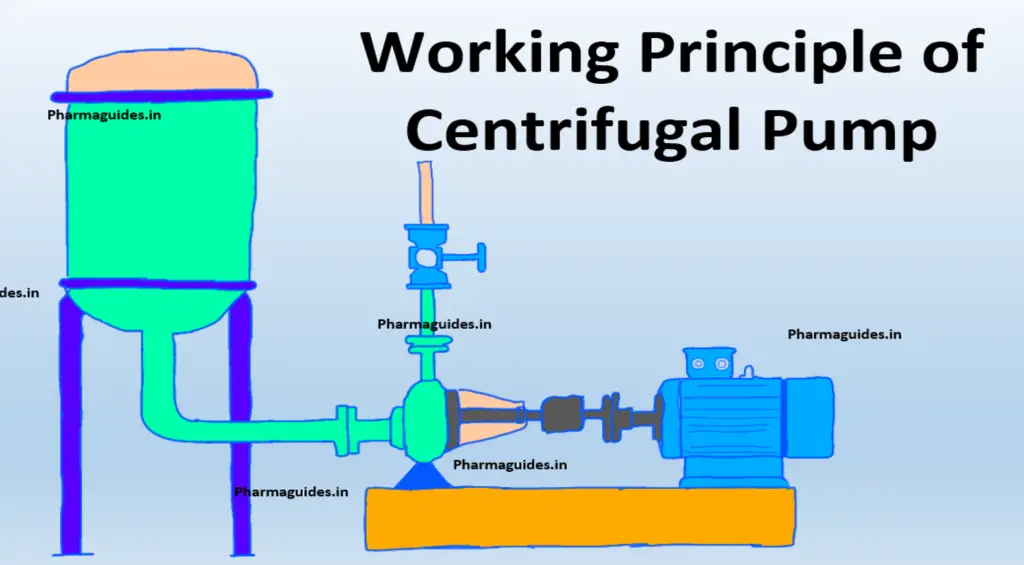
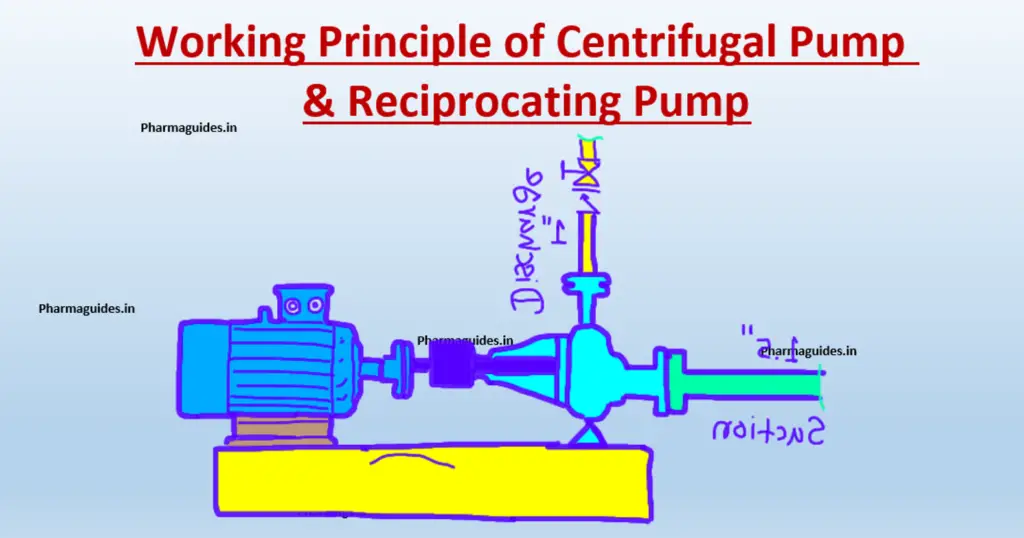
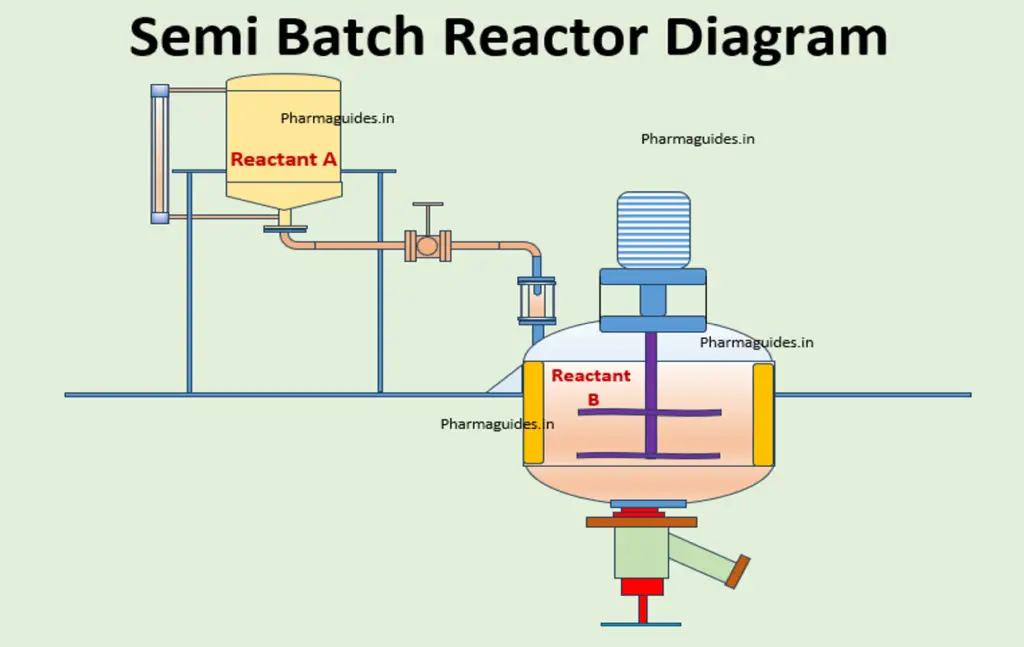
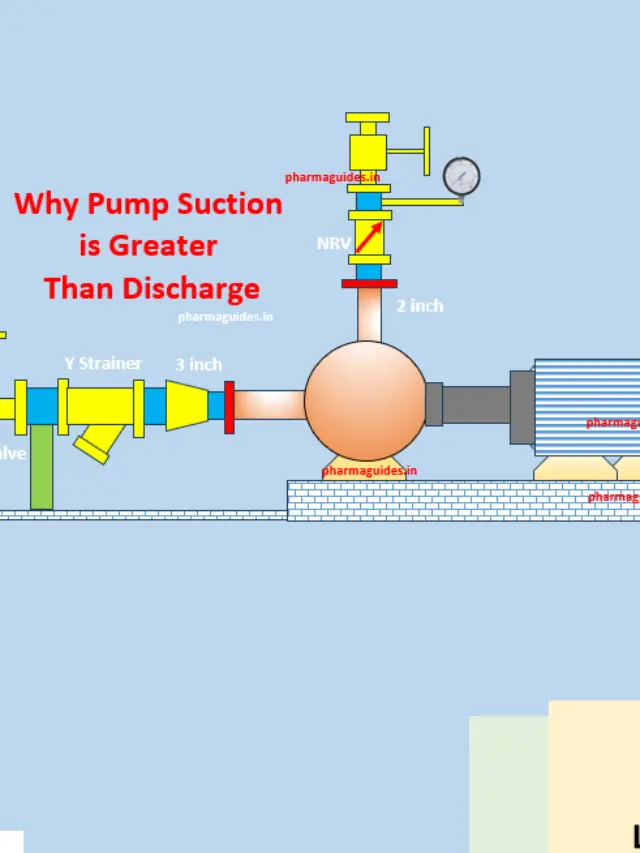
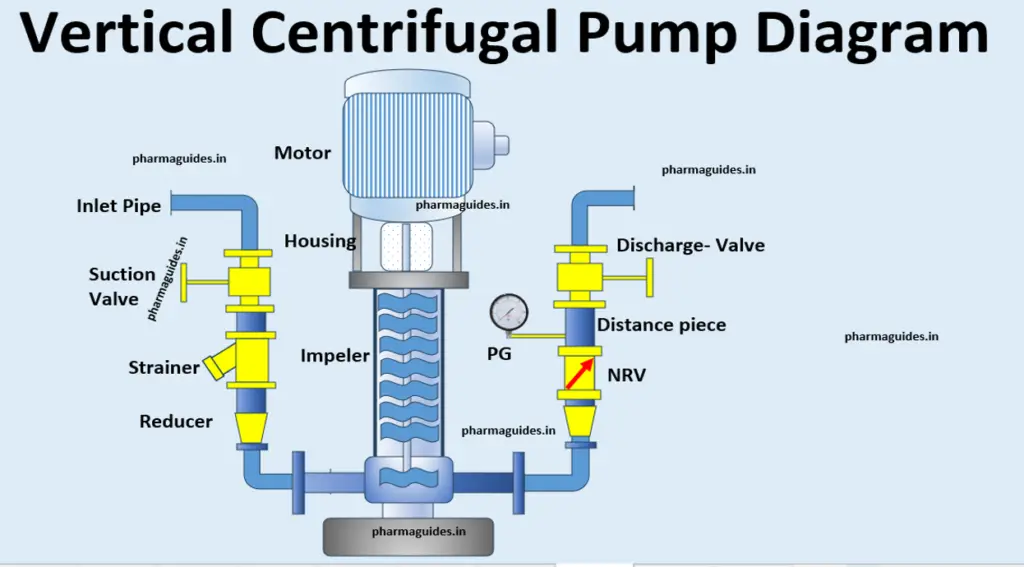
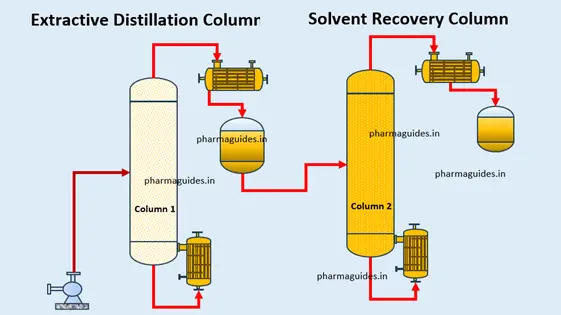
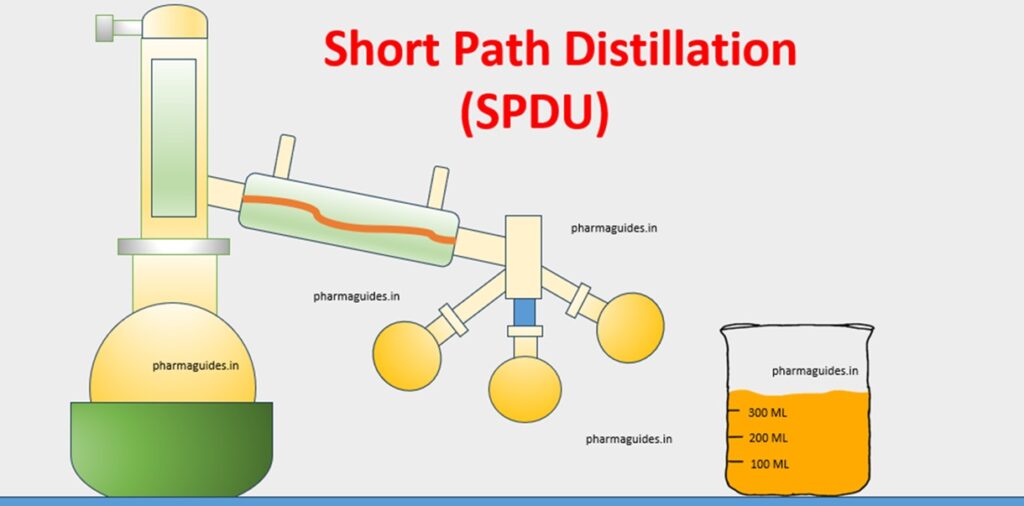
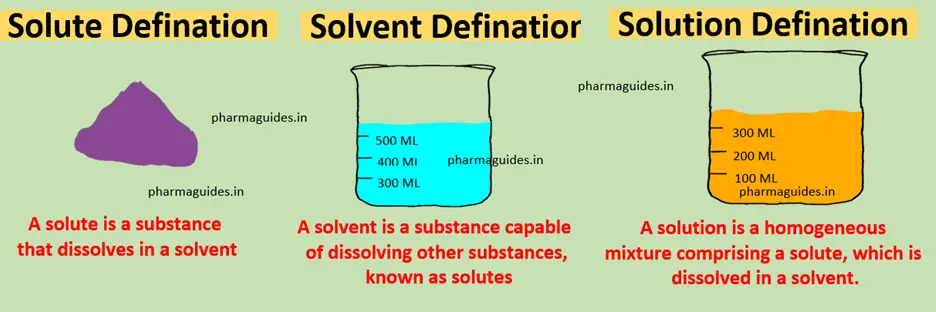

สล็อตสล็อตเว็บใหญ่ตรงไม่ผ่านคนกลางไม่มีอย่างน้อยเว็บหลักสล็อตออนไลน์เกมสล็อตแตกง่าย 2022 สล็อตเว็บใหญ่สล็อตออนไลน์ตรงไม่ผ่านเอเย่นต์ไม่มีอย่างน้อยเว็บเกมสล็อตออนไลน์ เกมสล็อตสามารถเล่นผ่านระบบOnlineได้ง่าย เพียงท่านมีมือถือเครื่องเดียว เชื่อมต่อInternetเท่านั้นเว็บเกมสล็อตที่เล่นได้ทุกวัยไม่ว่าท่านจะอยู่บ้าน
ก็ทำได้ร่วมบันเทิงใจกับ slot เว็บหลักสล็อตตรง
ไม่ผ่านนายหน้าที่พวกเราพร้อมบริการ เกมคาสิโนออนไลน์ที่มีเกมมากมากมายค่าย ให้ผู้เล่นได้เลือกเล่นกันง่ายๆSlotเว็บใหญ่สล็อตตรง ไม่ผ่านเอเย่นต์ไม่มีขั้นต่ำ จะก่อให้ท่านได้เจอกับประสบการณ์ใหม่ๆกับพวกเราSlotซับซ้อน โบนัสให้มากมายพร้อมให้บริการและมีคณะทำงานมากกว่า200คนที่ดูแลผู้เล่นอยู่ ทีมงานของพวกเรามีประสบการณ์มากกว่าสองyearเว็บเล่นสล็อตปัจจุบันไม่ว่าผู้เล่นจะเกิดปัญหาฝาก – ถอนไม่มี อย่างต่ำหรืออยากได้ขอคำแนะนำเกี่ยวกับGameSlotOnline หรือปัญหากับระบบทีมงานพวกเราก็เชี่ยวชาญปรับปรุงได้อย่างรวดเร็ว ทันใจแน่ๆแต่ให้อย่าคลาดโอกาสดีๆกับเราสมัครเป็นสมาชิกใหม่สล็อตสล็อตเว็บใหญ่ตรง
โบนัสแตกหนักโปรสล็อตออนไลน์เยอะแยะคอยท่านอยู่ สล็อตแตกหนักเว็บเดิมพันสล็อตออนไลน์ตรงไม่ผ่านนายหน้าไม่มีอย่างน้อยGameมาก Slot Gameเยอะแยะไม่ว่าจะเป็นGameSlot,บาคาร่าออนไลน์,กีฬา|กีฬาออนไลน์|เกมกีฬา|เกมกีฬาออนไลน์|บอล|ฟุตบอล รวมทั้งอื่นๆอีกมากมายที่มีให้แด่ท่านนั้นได้บันเทิงใจกับGame Slotเว็บสล็อตออนไลน์รวมค่ายเว็บหลักสล็อตออนไลน์ตรง ไม่ผ่านคนกลาง พร้อมจังหวะการจ่ายเงินเดิมพันที่จะทำให้ท่านนั้นลุ้นกันมันส์ๆเกมสล็อตแตกง่ายไม่มีอย่างต่ำล่าสุดสล็อตออนไลน์โจมตีได้เงินจริง ท่านจะต้องมีสติเมื่อใดก็ตามเล่นSlot Onlineสล็อตเว็บใหญ่ตรง ไม่ผ่านเอเย่นต์ เว็บเกมสล็อตตรง กำลังมาแรงสล็อตเครดิตฟรี
Slotสล็อตออนไลน์เว็บตรงตรงกำลังมาแรง เครดิตฟรีสล็อตผู้เล่นที่กำลังมองหาเว็บหลักสล็อตออนไลน์สล็อตออนไลน์ไม่มีขั้นต่ำเว็บเกมสล็อตของเราตอบโจทย์แจกฟรีเครดิตเหมาะสมกับผู้เล่นที่ต้องการศึกษา แบบการชนะ ฟิเจอร์เกมเพื่อผู้เล่นนั้นรู้เรื่องตัวเกม แบบอย่างเกมว่าจะต้องเล่นSlotสล็อตออนไลน์เว็บตรงตรง ไม่ผ่านคนกลางแบบไหนนับว่าเป็นแนวทางเล็กๆของเกมนั้นจะก่อให้ผู้เล่นนั้นมั่นใจทุกการวางเงินพนันมากยิ่งขึ้นมีหนังสือรับรองโอกาสชนะก็จะมากขึ้นอีกต้วย เล่นให้เคยชินรู้เรื่องให้มากมายสล็อตเครดิตฟรี 2022เล่นได้ทุกGameไม่ว่าจะเป็นเกมใหม่ๆที่พวกเราได้เก็บรวบรวมมาให้ทุกสัปดาห์หรือเกมมันส์ที่ได้รับความนิยมก็สามารถร่วมสนุกกันได้กับสล็อตแตกหนักโดยไม่ต้องฝาก – ถอนเข้าระบบของเราก่อนเลย และไม่ต้องใช้เงินของนักพนันเองท่านจะได้พบกับประสบการณ์ที่ท่านอาจไม่เคยพบเจอที่แห่งไหนมาก่อนของเราให้ทุกท่านนั้นติดใจแน่ๆ โปรโมชั่นมีให้ไม่ยั้งเพื่อเพิ่มความสนุกสนานไปอีกขั้นกับสล็อตออนไลน์
เว็บหลักสล็อตตรง ลิขสิทธิ์แท้ ค่ายสล็อตมาก
เว็บเกมสล็อตออนไลน์ตรงลิขสิทธิ์แท้ ค่ายSlot Onlineเยอะแยะ พวกเรามีคณะทำงานคัดสรรค์เกมสล็อตออนไลน์เว็บตรงสล็อตออนไลน์ตรง ไม่ผ่านเอเย่นต์ ไม่มีอย่างน้อย ล้นหลามมีแม้กระนั้นเกมสนุกๆGameที่การันความมันส์ พร้อมสูตรสล็อต
2022 คำนวณด้วยระบบ AIหนึ่งร้อยเปอร์เซ็นต์ เพิ่มโอกาสเอาชนะการเล่นSlotเว็บเดิมพันสล็อตออนไลน์แท้ ไม่มีขั้นต่ำและก็เราได้มีการอัพเดตเกมใหม่ๆอยู่เป็นประจำพวกเรามีเกมมากมากยิ่งกว่า สองพันGameจากค่ายดังไม่ว่าจะเป็นpg slotSLOTJOKER สล็อตXOรวมทั้งฯลฯพร้อมให้บริการผู้เล่นไม่ว่าท่านจะอยู่ที่มุมไหนของโลกกันเลยสล็อตแตกหนัก 2022กับเกมที่มีวิธีการจำนวนมาก การหมุนให้ครบทั้งผองประมาณวิธีกล้วยๆผู้ใดกันก็เล่นได้
I constantly spent my half an hour to read this blog’s
articles or reviews daily along with a cup of coffee.
It’s perfect time to make some plans for the future and it’s time to be happy.
I have learn this submit and if I may just I want to suggest you some interesting
issues or suggestions. Maybe you can write next articles
relating to this article. I wish to read even more things approximately it!
My coder is trying to persuade me to move to .net from PHP.
I have always disliked the idea because of the costs.
But he’s tryiong none the less. I’ve been using WordPress on several websites for about a year and
am anxious about switching to another platform. I have heard good things about blogengine.net.
Is there a way I can transfer all my wordpress content into
it? Any kind of help would be greatly appreciated!
Have you ever thought about creating an e-book or guest
authoring on other sites? I have a blog based on the same ideas you
discuss and would really like to have you share some stories/information. I know my readers would value
your work. If you are even remotely interested, feel free to send me an email.
Thanks for sharing your thoughts. I truly appreciate your efforts and I will
be waiting for your next write ups thanks once again.
This design is incredible! You certainly know how to keep
a reader amused. Between your wit and your videos, I was almost moved to start
my own blog (well, almost…HaHa!) Fantastic job.
I really loved what you had to say, and more than that, how you
presented it. Too cool!
Wonderful beat ! I would like to apprentice while you amend your website, how could
i subscribe for a blog website? The account helped me a
acceptable deal. I had been a little bit acquainted of this your broadcast provided bright clear
concept
Great article.
Does your website have a contact page? I’m having problems locating it but, I’d like to shoot you an email. I’ve got some suggestions for your blog you might be interested in hearing. Either way, great website and I look forward to seeing it expand over time.